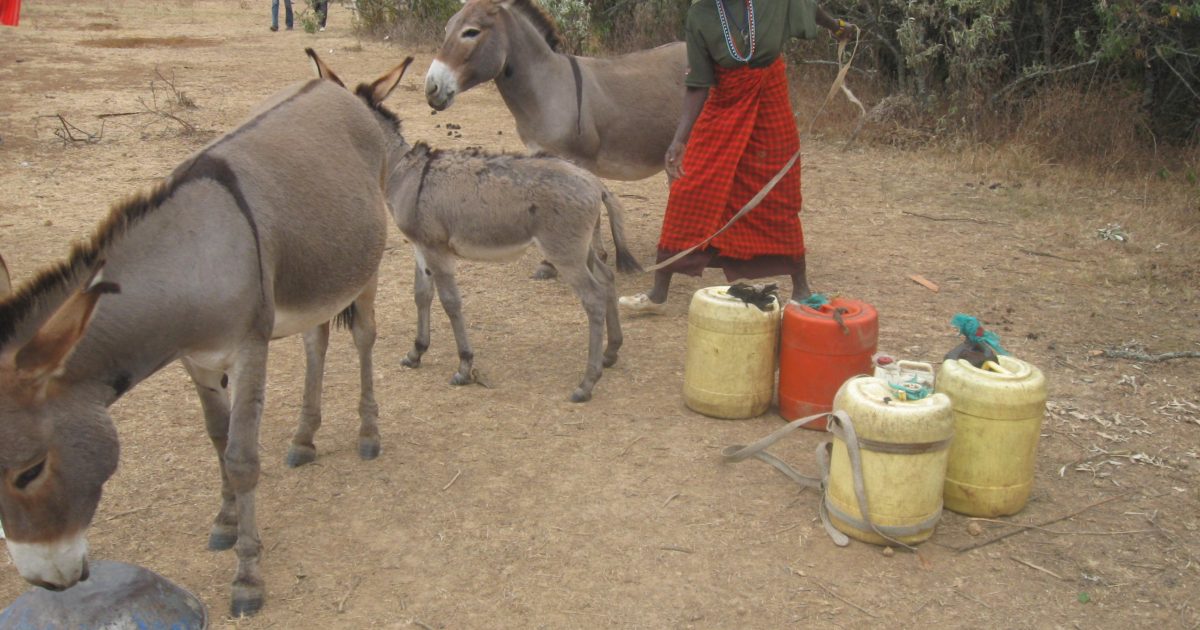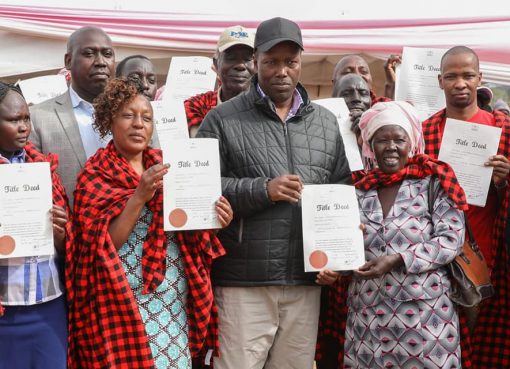Donkey farmers in Olposimoru area, at the border of Narok West Sub county and neighboring Tanzania country can now breathe a sigh of relief after the government closed slaughter houses that were a threat to welfare of their donkeys.
The farmers who spoke to KNA when Africa Network for Animal Welfare (ANAW) officers visited them said since 2020 when the government ordered closure of donkey slaughter houses countrywide, cases of donkey theft have decreased tremendously and the number of the beast of burdens has increased gradually.
Olposimoru Nyumba Kumi Initiative Chairman Mulinga Ngume lamented that he had lost eight donkeys between the year 2016 and 2019 when the slaughter houses were operational.
Ngume said he had lost hope in rearing donkeys because no matter how hard he tried to protect his animals, they would be stolen in the wee hours of the night.
“We could not sleep because donkeys were being stolen at night. It reached a point where farmers were forced to put a bell on the animal’s neck to monitor its movement,” said Ngume.
However, he said things have changed since the slaughter houses were closed as the number of donkeys are now increasing gradually.
The donkey farmer said the animals are crucial in transportation as the residents’ trek for long distances to look for water and to get into market places.
“We walk for approximately 40 kilometers to and fro looking for water. When we want to access the market place, we walk for over ten kilometers. The donkeys help us to transport our luggage to the market,” he said.
Another Nyumba Kumi member Ntimaa Ole Penjo said he lost 16 donkeys during the season the slaughter houses were operational, while lauding the government for closing slaughter houses dealing with donkey meat.
“I am now slowly recovering from what I lost. Currently I have three donkeys and I hope to add more to the stock,” he said, adding that they do not mostly buy donkeys, but they exchange them with a sheep or goat.
He recalled how they used to deal with many cases of donkey theft when the slaughter houses were open and how they would spend sleepless nights trying to nab the criminals.
Esoit Assistant Chief Godfrey Ntaiya reiterated that when the government closed the slaughter houses, rampant donkey theft stopped.
He remembered that in a week’s time, he would deal with two or three cases of donkey theft, where most of the criminals were not arrested.
Dr. Denis Bahati, ANAW Programme Manager said their main focus is to build capacity of the communities living at the border countries as Tanzania and Ethiopia have licensed the sale of donkey meat.
Dr. Bahati revealed that before the year 2016, the population of donkeys in the county was 1.8 million, and increased to 2.1 million in the year 2017. Nevertheless, the population of donkeys in the county reduced to 1.1 million by the year 2019.
The programme manager reiterated they will continue working with the local administration to help boost security for the donkeys and ensure they recover the animals in case of theft.
While Kenya has closed donkey slaughter houses, Dr. Bahati said the Tanzania side is yet to close their slaughter houses posing a risk of the animals in the border areas.
The government ordered donkey slaughterhouses closed last year amid concerns over the theft of the animals by gangs seeking their skin.
By that time, Kenya had four licensed donkey abattoirs, more than any other country in Africa, which used to slaughter around 1, 000 donkeys a day.
The donkey slaughter houses included Star Brilliant in Naivasha, Goldox Kenya (Mogotio), Fuhai (Machakos) and Silzha (Turkana).
Before the closure of the abattoirs, the donkey farmers held demonstrations calling on the government to intervene and protect their donkeys as hardly a week would pass without reports of donkey theft being reported in the county.
Dr. Bahati said it is believed that the skin of a donkey has special proteins used to make Traditional Chinese Medicine (TCM), the kind of protein that is not found in any other animal. Donkeys are also on high demand in the Middle East as their skins are used to make this medicine.
By Ann Salaton





